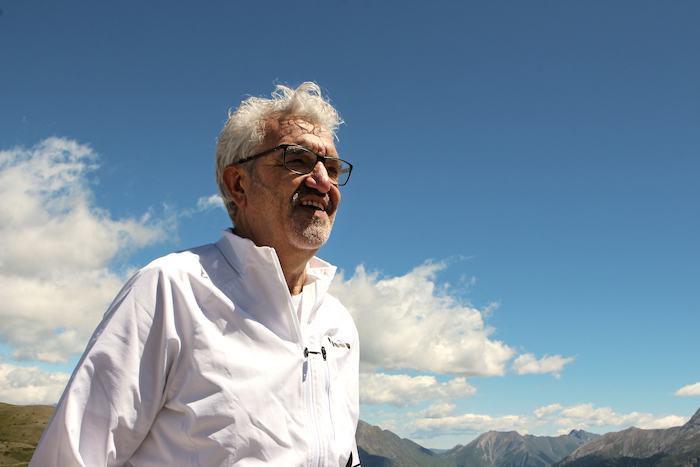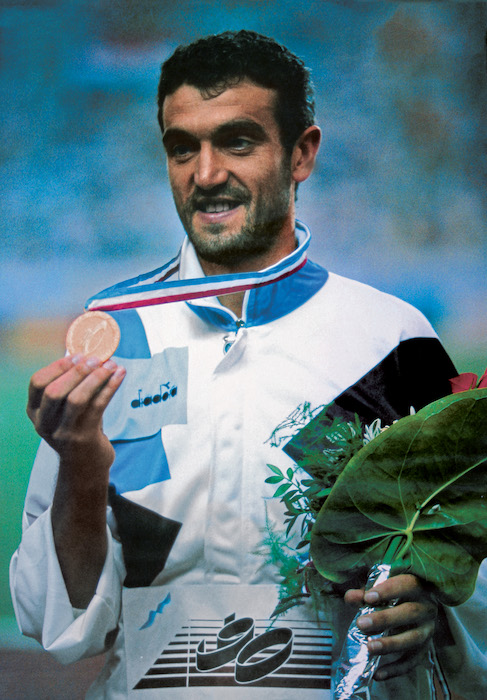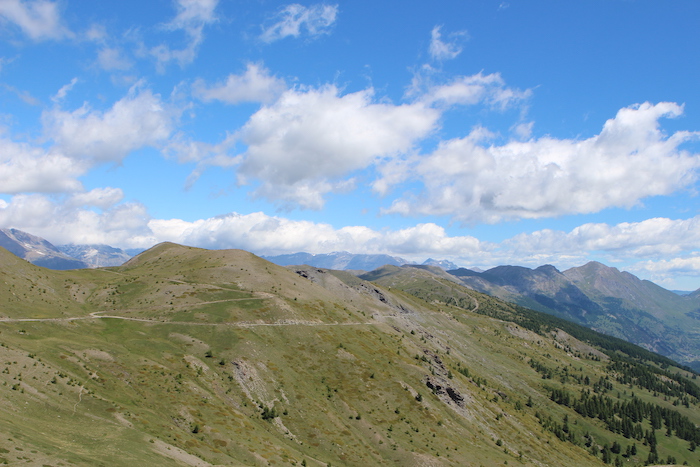What is the secret to high performance? To being the best in the world? To being the best each of us can be? Athletes have asked themselves this question throughout history. And, over and over again, they have come up with the same answer. There is no secret. As one Italian athlete would find out.
In 1987 Gelindo Bordin was a 28-year-old runner with some solid results to his name, including winning the Milan, Stuttgart and Rome marathons. But Gelindo sensed that he had not quite reached his full potential. His path to becoming one of Italy’s brightest stars in distance running had not been straightforward (these journeys rarely are). But now Gelindo felt that he was on the cusp of achieving his dreams. The question was: what was missing? What did Gelindo need to do to maximise his performance? What was the secret?
Born in 1959 as one of four boys, Gelindo’s first passion was football (soccer), although the position he played didn’t require a lot of running: “It’s a long story,” Gelindo says, “but I can try to make it short. I was a soccer player: a goalkeeper. A position that had nothing to do with running.” One rainy day, a teacher told the class that instead of football practice, they would run two laps of the pitches. Gelindo not only won this impromptu race, but he lapped several of his classmates. Encouraged by the teacher and his fellow pupils, Gelindo entered a local 10km event. “It was a local town race and I was a young boy running against older guys,” he remembers. “I finished tenth.” Gelindo was 12 years old.

The Bordins were farmers. Gelindo says that his life was always very busy. His parents kept things simple for their boys: they could do whatever they wanted, as long as they worked hard at school and contributed to the upkeep of the farm.
Toiling alongside his parents and siblings on the farm provided Gelindo with one of the most important lessons he was to learn – one that undoubtedly contributed to his success as an athlete. “If you do something today,” the young man discovered, “tomorrow, you will have a result. You can see something growing from the work you put in.”
Gelindo was not the only one in the family to discover a talent for running. One of his brothers – four years Gelindo’s senior – started running around the same time as Gelindo and went on to complete a marathon in 2h19m… while working as a builder. But by the age of 14, Gelindo was already beating his older sibling. Gelindo’s brother allowed his athletic ambitions to fade. Maybe the 18-year-old knew he wasn’t destined for a professional running career; perhaps he was irked because his 14-year-old kid brother was faster. Gelindo quickly become the running star of the family… not that his parents made too much of a fuss about it.
The fact that Gelindo’s parents did not really pay too much attention to his running career was a good thing as far as Gelindo is concerned (although, he now chuckles, that changed when he was catapulted into the global spotlight). “You know, when parents involve themselves too much in their children’s sport,” he muses, “it’s not good. Most of the time, it is better to let the coaches do the job with an athlete.”
In Gelindo’s case, the coach left alone to develop his young athlete’s prodigious talent was Luciano Gigliotti. Gigliotti recognised Gelindo’s natural ability, but also respected his background. The coach appreciated that Gelindo had grown up working physically hard on the farm and always being active. It was Gigliotti who guided Gelindo through a training regime that at times included running 280km per week. However, as Gelindo was training hard, the worlds of track and road running were going through major changes.
Gelindo Bordin’s career highlights came at a time when East African athletes were starting to emerge as a dominant force in distance running. Take Gelindo’s 2h08m19s win at the 1990 Boston Marathon. The preceding two races had been won by Ibrahim Hussein of Kenya (1988) and Abebe Mekonnen from Ethiopia (1989), the first two African runners to top the podium in the race’s history. In the 31 editions of the race following Gelindo’s victory, there have been only three winners who have not come from either Kenya or Ethiopia.

Gelindo’s coach is on record as suggesting that perhaps the reason the Italian was so successful is that in many ways his upbringing, lifestyle and training resembled that of the incredibly successful athletes from the East African hotbeds of running talent. A youth spent being physically active. Simple, nutritious food. Other successful athletes to emulate and compete against. And the chance to train at altitude.
Which is where Sestriere comes in to play.
By 1987, Gelindo knew that he had many of the ingredients to make the most of his talent. What he needed to add was a place to train at altitude, where he felt comfortable and in control. Initially Gelindo had tried to find a location in Switzerland: “But I didn’t like it,” he says, bluntly. “I didn’t like it very much in Switzerland. Because there were just one or two places to train if you want to run long. And the places where you could run the sorts of distances I wanted to were not at the right altitude.”
The search was on for somewhere in Italy that would tick all the boxes. “The reason I had to find somewhere in Italy is because of the food, first of all,” he says, “and I knew that I would be able to drink the water everywhere. So just because of those two things, there would be less risk to my training.” A couple of friends suggested Gelindo went with them to train in the Alpine resort of Sestriere, an hour-and-a-half’s drive west from Turin. Back in 1987, Sestriere was a relatively small ski resort, which had been built in the 1930s by Giovanni Agnelli, founder of car manufacturer FIAT. The Winter Olympics that would turn Sestriere in to a fully developed resort would not arrive for another 19 years. But it was here that Gelindo found the missing piece that would complete his preparations for the biggest running achievement of his life.

The village of Sestriere sits at just over 2,000m above sea level. Gelindo quickly discovered that being based in the town meant that he was able to drive down to lower altitudes for certain sessions while spending most of his time living and running in the thinner air that would increase his red blood cell count.
But while Sestriere was a good location for Gelindo, it was not yet perfect – and he strove for perfection. What was missing was somewhere to run speed sessions at 2,000m altitude. And for that, Gelindo employed his eye as an architect, the good will of the people who owned the village and the brute force of a group of elite international athletes who had followed him to Sestriere to train.
To the north of Sestriere, the hills rise majestically towards Monte Tre Seie and Monte Fraiteve. It was to the side of these hills that Gelindo turned his gaze and imagined a trail that would follow the contours of the hill at 2,200m above sea level. At the time, the hills were sparsely covered with young pine trees, revealing the possibility of a winding, flat route that would cover almost 800m with barely 30m of elevation gain along its entire length.
Gelindo talked to the town’s elders and they agreed to create the trail he envisioned. “With the workers from the town to help, we got started,” says Gelindo. “I designed the trail and they took a small earth-moving machine and started to make the route I had proposed. Of course, at the beginning the route was very narrow – perhaps 60cm wide. But that was not really a problem. The real problem would come later.”
After starting to carve the route around the mountain, the construction team came across a huge rock. There was no way they could get through it, so their suggestion was to divert the trail up and over it. Of course, this completely undermined the idea of a flat route. So Gelindo took matters into his own hands:
“When we found the rock, the workers said that there was no way through it. But I said they should not worry. All my friends who came to Sestriere to train with me agreed to help. And so we climbed up to the trail and we broke up the rock by hand with hammers. The rock was 50m wide. But by doing this we were able to complete the trail.”
Gelindo laughs when he tells this story: not just because it was such a crazy thing to do, but because the team of athletes had created a 50m section of the trail made of solid rock. And if the rock was wet and slippery, running speed sessions at 20km/hour suddenly became something of a dangerous exercise.
What Gelindo was sure about was that he had done everything he could to become the best runner he could be. Perhaps, after the search for the perfect training location and the effort required to create what is now known as the Sentiero Gelindo Bordin, there was a risk that it might all have been for nothing if he did not achieve his Olympic ambitions. But at least Gelindo had stacked the odds in his favour.
And so it was that on Sunday 2 October 1988 in Seoul, Korea, 118 runners from 60 countries set off for the Olympic Marathon. It was a hot and humid day, made worse by the organisers’ insistence that the athletes start at 2.30pm in order to cater for global television audiences. The pace from the start was furious, and stayed high as the kilometres ticked by. It was clear that this marathon would be a test of wills as much as physical fitness; one by one, runners dropped off the pace. With just a couple of miles to go, the leading group of five consisted of Ahmed Saleh of Djibouiti, Juma Ikangaa of Tanzania, Takeyuki Nakayama of Japan, Douglas Wakiihuri of Kenya and a lone European – Gelindo Bordin of Italy.
Closing in on the Olympic stadium where the race would finish on the track, the pace picked up even more. Ikangaa and Nakayama dropped back.
Footage of the race shows Saleh, in the lead with barely a mile to go, desperately looking back as Bordin closed in on him. As he passed Saleh and moved into the gold medal position, Bordin barely glanced back. The race was his for the taking and Bordin made the lap of the track to the finish line look easy. Although afterwards he said that the last 5km had felt like a war.
As Gelindo crossed the finish line and dropped to his knees, it is impossible to imagine the strength of emotions he was feeling. But perhaps there is one thing we do know – that Gelindo Bordin had figured something out. That when it comes to being the best we can possibly be, there really is no secret. It is just a matter of doing everything you can to make your dreams come true.
IN PARTNERSHIP WITH DIADORA
www.diadora.com IG: @diadora


